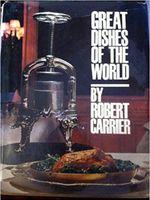Advertisement
Poached Eggs
Appears in
Published 1963
For the best results it is essential to use fresh eggs, preferably not more than three or four days old. I always find that the whites of older eggs tend to go stringy and the yolks are much more apt to break than those of fresh ones. A large wide pan is a necessity, too, if you intend to poach more than one egg at a time. And be sure it is deep enough to allow at least an inch of water over the eggs to prevent them from sticking to the bottom of the pan.
Fill the pan with water; bring it to the boil and add 1 tablespoon of vinegar and a little salt to help eggs keep their shape. Have your eggs ready, each broken into a separate cup. Holding a cup in each hand, tip the eggs into the rapidly boiling water. Remove pan from the heat; as the whites begin to set, turn eggs once or twice with a perforated spoon to give them a proper shape; cover pan and allow eggs to simmer gently, still off the heat, for about 3 minutes. Lift eggs out with a perforated spoon and, if you are not going to serve them immediately, slide them into a bowl of warm water. If you are, put them in cold water for a minute to stop cooking and to remove all taste of acidity; drain them dry on a clean towel and trim straggly bits of white with a pair of scissors.


